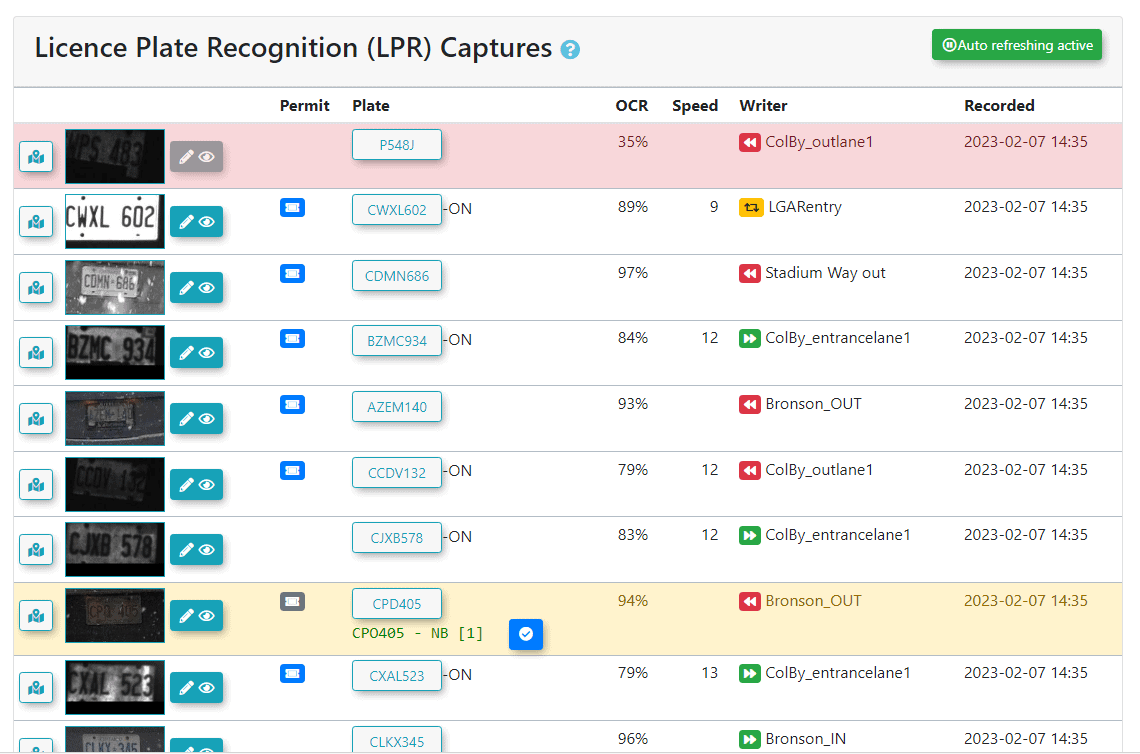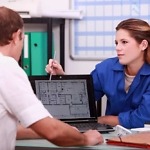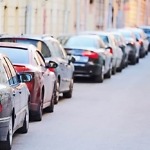License Plate Recognition (LPR): A Comprehensive Guide

License Plate Recognition is a technology that uses cameras and software to identify vehicles by their license plates. It is widely used in law enforcement, toll collection, parking management, and other applications.
License Plate Recognition (LPR) is also referred to as Automatic Number Plate Recognition (ANPR) but the two are actually not the same thing, though both offer similar features.
ANPR/LPR is an important tool for enhancing public safety and improving traffic flow. In this article, we will explore the basics of license plate recognition and its various applications.
What is LPR Technology?
LPR is a type of computer vision technology that uses image recognition algorithms to read and identify license plate numbers on vehicles. The technology captures an image of a license plate, processes the image to extract the license plate number, and then compares it against a database of authorized vehicles to determine entry or exit permissions.
The Difference Between LPR and ANPR
LPR (License Plate Recognition) and ANPR (Automatic Number Plate Recognition) are terms that are often used interchangeably, but they actually refer to two different technologies.
LPR is a technology that is primarily used in North America and is designed to read license plates on vehicles. ANPR, on the other hand, is a more general term that is commonly used in Europe and refers to the recognition of number plates on all types of vehicles, including motorcycles.
Another difference between LPR and ANPR is the way they read license plates. LPR systems typically use infrared lighting to capture an image of the license plate, while ANPR systems use optical character recognition (OCR) technology to read the characters on the plate.
Despite these differences, both LPR and ANPR are used for similar purposes, such as enhancing security, monitoring traffic, and managing parking. In fact, many modern systems use a combination of LPR and ANPR technologies to provide the most accurate and reliable results possible.
Overall, while LPR and ANPR may have some technical differences, they are both important technologies that play a critical role in a wide range of applications.
How Does License Plate Recognition Work?
LPR systems use cameras to capture images of license plates as vehicles pass by. These images are then processed by software that uses optical character recognition (OCR) to read the alphanumeric characters on the plates. The software can then compare the characters against a database of known license plates to determine if the vehicle is authorized or not.
LPR systems can be either fixed or mobile. Fixed LPR systems are typically installed at entry and exit points, such as toll booths, parking garages, and gated communities. Mobile LPR systems can be mounted on police cars, tow trucks, or other vehicles, allowing them to scan license plates while on the move.
Benefits of LPR
- Increased Efficiency: With LPR technology, there’s no more manual ticketing or searching for lost tickets. The system automatically recognizes and logs each vehicle, reducing entry/exit times and freeing up parking attendants for other tasks.
- Improved Security: LPR technology enhances security by providing a record of every vehicle that enters and exits a parking lot. This information can be used for security purposes, such as in case of theft or accident.
- Increased Accuracy: Unlike manual ticketing, LPR technology eliminates human error in recording license plate numbers and calculating parking fees.
- Better User Experience: With faster entry/exit times and improved accuracy, LPR technology provides a better overall experience for drivers using parking facilities.
How LPR Works
The process of LPR technology can be divided into three main stages: image capture, image processing, and data comparison.
Image Capture
In this stage, cameras equipped with LPR technology capture an image of the license plate as a vehicle enters or exits a parking facility.
Image Processing
The captured image is then processed using image recognition algorithms to extract the license plate number. The technology is designed to work even in challenging conditions, such as low light or obscured license plates.
Data Comparison
The extracted license plate number is compared against a database of authorized vehicles to determine entry or exit permissions. If the license plate is recognized and associated with an authorized vehicle, the barrier or gate will open and the vehicle can proceed.
Sample OPS-COM LPR Report
Applications of License Plate Recognition
Law Enforcement: LPR is widely used by law enforcement agencies to identify stolen vehicles, wanted suspects, and vehicles associated with criminal activity. Police departments can use LPR to set up surveillance on specific vehicles or areas, and can also use it to track the movement of suspects.
Toll Collection: LPR is also used for toll collection on highways and bridges. The system can automatically charge drivers based on the license plate number of their vehicle, eliminating the need for toll booths and reducing traffic congestion.
Parking Management: LPR is used in parking garages and lots to monitor the entry and exit of vehicles, and to ensure that only authorized vehicles are parked in reserved spaces. The system can also be used to issue tickets to violators.
Security: LPR can be used for security purposes in public areas such as airports, train stations, and shopping malls. The system can alert security personnel if a vehicle associated with a threat is detected.
Challenges and Limitations of License Plate Recognition
LPR systems are not foolproof and there are several challenges and limitations associated with them. The accuracy of LPR systems depends on several factors, such as the quality of the cameras, the angle and distance of the vehicle from the camera, and the condition of the license plate. In addition, LPR systems can be affected by weather conditions, such as rain, snow, and fog.
Privacy is also a concern with LPR systems, as they can be used to track the movement of vehicles and individuals. There have been cases where LPR data has been used for unauthorized purposes, such as tracking the movements of political activists or protesters.
LPR vs. Traditional Parking Solutions
License plate recognition (LPR) is a technology that is increasingly being used in parking management. How does it compare with traditional parking methods?
Here are some key differences:
- Accuracy:
One of the biggest advantages of LPR is its accuracy. License plate recognition can quickly and accurately read license plates, ensuring that only authorized vehicles are parked in a given area. Traditional parking methods, such as manual monitoring or paper-based systems, are more prone to errors and can be time-consuming to manage. - Efficiency:
LPR systems are highly efficient, with the ability to scan license plates and issue parking tickets automatically. This can significantly reduce the time and resources required to manage parking. In contrast, traditional parking methods can be slow and require manual intervention for tasks such as issuing tickets or monitoring parking. - Security:
License plate recognition systems can enhance security by detecting unauthorized vehicles and alerting security personnel to potential threats. Traditional parking methods do not have this capability and can be more vulnerable to security breaches. - Cost:
While LPR systems can be more expensive to implement than traditional parking methods, they can ultimately be more cost-effective. LPR systems require less staffing and can reduce the risk of revenue loss due to unauthorized parking or ticket fraud. - User Experience:
LPR systems can enhance the user experience by making it easier and more convenient to park. Drivers can quickly and easily find available parking spots, and payment can be made electronically, reducing the need for cash or paper tickets. Traditional parking methods can be more cumbersome and time-consuming for drivers.
License plate recognition offers many advantages over traditional parking methods in terms of accuracy, efficiency, security, cost-effectiveness, and user experience. It is becoming an increasingly popular choice for parking management in a variety of settings.
Implementing License Plate Recognition: A Step-by-Step Guide
Define your objectives:
The first step in implementing LPR is to define your objectives. What are you hoping to achieve with LPR? Are you looking to improve security, monitor parking, or enhance law enforcement?
Understanding your objectives will help you determine the type of LPR system you need and how it should be configured.
Choose the right hardware:
The next step is to choose the right hardware for your LPR system. This includes cameras, lighting, and any other necessary components.
The quality and positioning of your cameras are critical for achieving accurate LPR results.
Select the appropriate software:
Once you have your hardware in place, the next step is to select the appropriate software. There are many LPR software options available, ranging from open-source solutions to commercial products.
Look for software that offers high accuracy rates, easy integration, and reliable performance. OperationsCommander works with many different camera vendors.
Configure your LPR system:
After selecting your hardware and software, it’s time to configure your LPR system. This involves setting up cameras, configuring the software, and integrating the system with any existing databases or systems you’re using.
Test and refine your system:
Once your LPR system is configured, it’s important to test and refine it. Conducting tests in different weather conditions, lighting situations, and traffic volumes will help you identify any issues and refine your system for optimal performance.
Train your staff:
Finally, it’s important to train your staff on how to use the LPR system. This includes training on how to read and interpret LPR data, as well as how to respond to alerts and notifications generated by the OPS-COM system.
Implementing LPR can be a complex process, but by following these steps and working with experienced LPR providers, you can implement a system that meets your organization’s specific needs and objectives.
License Plate Recognition is the Future Now
License plate recognition is a powerful technology that has many applications in law enforcement, toll collection, parking management, and security. While there are some challenges and limitations associated with LPR systems, it continues to be an important tool for improving public safety and traffic flow.
License Plate Recognition technology offers a more efficient, accurate, and secure solution for parking facilities. With increased efficiency, improved security, and better user experience, it’s no wonder that LPR is becoming the preferred choice for parking management.



